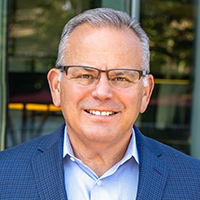OEMs are fighting to manage liquidity as the COVID-19 economic crisis persists.
By Gary Brooks, CMO, Syncron
With virtually every industry impacted by the COVID-19 pandemic, many businesses and companies have seen their hopes of a speedy economic recovery crushed. It looks like it could be quite some time before things are even remotely back to normal. And among the people who are having to get used to this idea the most are OEMs. Even more punishing is the realization that their liquidity is running low.
Since the pandemic began, there hasn’t been much need for new equipment. The numbers this year pale in comparison to last year. As a result, OEMs have had a tough time finding a way to stay afloat economically. The demand for new equipment is the lowest it has been since the economic crisis of 2008. With so many OEMs in this tough spot, they’re quickly needing to figure out new ways to lower their costs, and boost revenue and profits. Failure to achieve these goals could have long-term repercussions.
With that in mind, here are three things for OEMs to keep in mind regarding cost-management, and revenue optimization that will leave them in a better position once we’re past COVID-19.
Before the pandemic began in March, the manufacturing space and OEMs were beginning to shift to a “product-as-a-service” (PaaS) business model. PaaS lets customers buy machinery access and results, rather than the equipment that delivers it. PaaS is different from the more traditional model, where customers purchase equipment outright and are then left to cover any post-warranty maintenance and service. Most importantly, the PaaS model allows OEMs to achieve revenue KPIs while also amplifying customer satisfaction and increasing market share — all of which clearly points to PaaS being “the way of the future.”
However, our current economic climate, and the complexities surrounding service and business models today could — for the time being — put a damper on the growth and implementation of PaaS. I believe that OEMs will choose a slower evolution, focusing their attention on the present and shifting to the long-term once we’re past the COVID-19 dilemma.
The current drop in new order sales has increasingly caused OEMs to rely on their after-sales service businesses. As a result, the managing of inventory will be even more important. In addition to being quite expensive, carrying costs are also extremely inefficient. So, it’s vital for OEMs to be as exact as possible when it comes to what, and how many of each, are in stock.
OEMs can optimize service parts businesses by doing a better job balancing their inventory levels and doing a more efficient job with distribution to minimize supply chain disruption. This will help to cut down on unnecessary overhead costs by optimizing potential sales opportunities, identifying and liquidating surplus parts.

OEMs must use data and advanced computing to adjust KPIs.
In times such as these it can be natural to feel as if you need to make extreme decisions in the face of attaining KPIs. But doing this in the pursuit of short-term gain often comes with far-reaching future consequences. For example, blindly cutting price as a way to remain competitive can lead to a race to the bottom that actually hurts profits in the long run.
As a result, OEMs need to look beyond their initial KPIs and re-establish new parameters for what success should look like. Adjusting targets is not conceding defeat. Since KPIs serve as a great framework for success, they need to remain flexible enough to be adapted to changing market conditions so businesses can remain successful both today and in the future.
Liquidity issues can cause a tremendous amount of stress for a business of any size. But while things are undoubtedly tough now, the tips above can allow OEMs to manage the COVID-19 pandemic more efficiently and be set for great success once we are on the other side of it.

Gary Brooks
As Chief Marketing Officer at Syncron, Gary Brooks is responsible for global marketing and focuses on enabling leading manufacturers around the world transform their after-sales service operations to maximize product uptime.
In this episode, I sat down with Beejan Giga, Director | Partner and Caleb Emerson, Senior Results Manager at Carpedia International. We discussed the insights behind their recent Industry Today article, “Thinking Three Moves Ahead” and together we explored how manufacturers can plan more strategically, align with their suppliers, and build the operational discipline needed to support intentional, sustainable growth. It was a conversation packed with practical perspectives on navigating a fast-changing industry landscape.